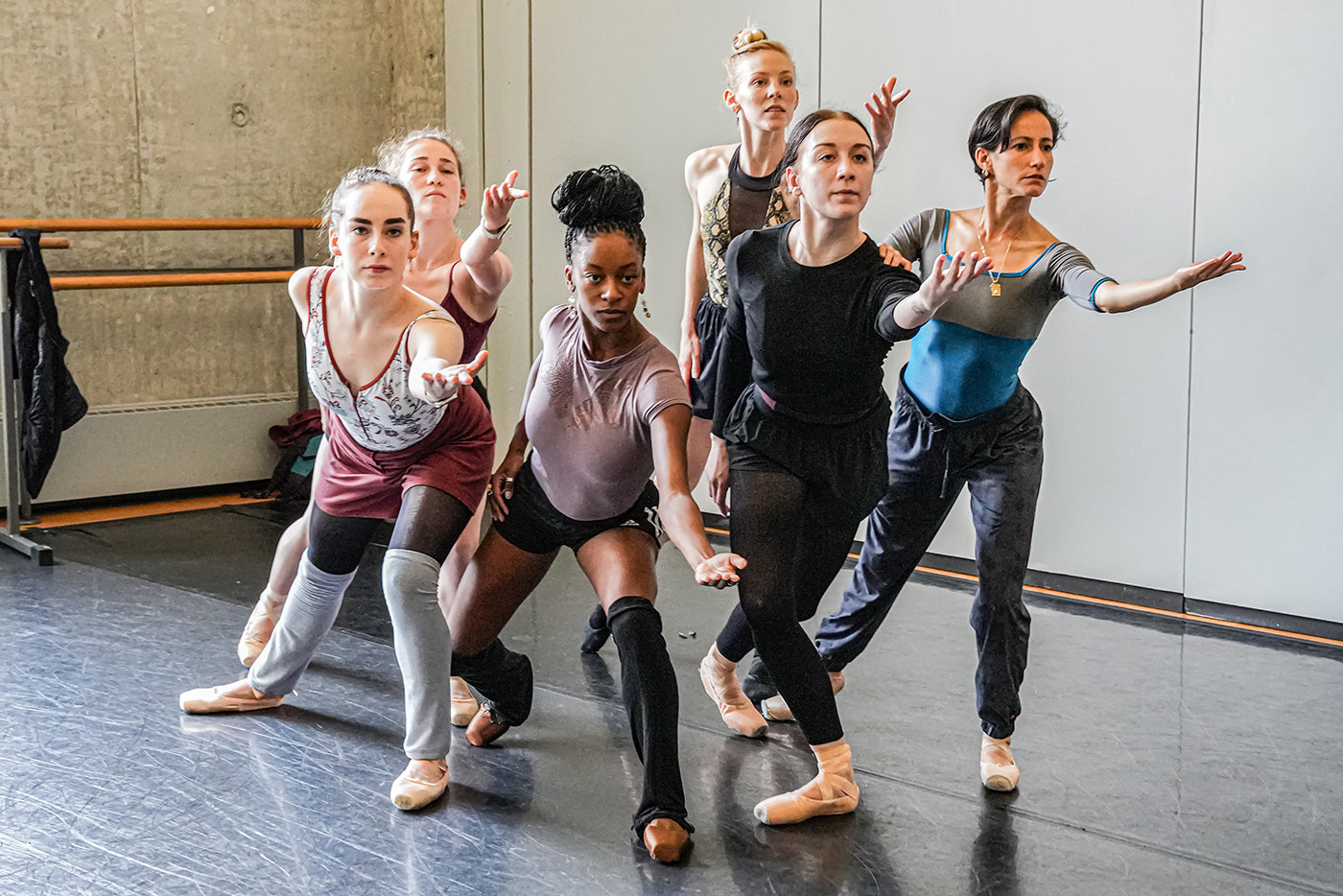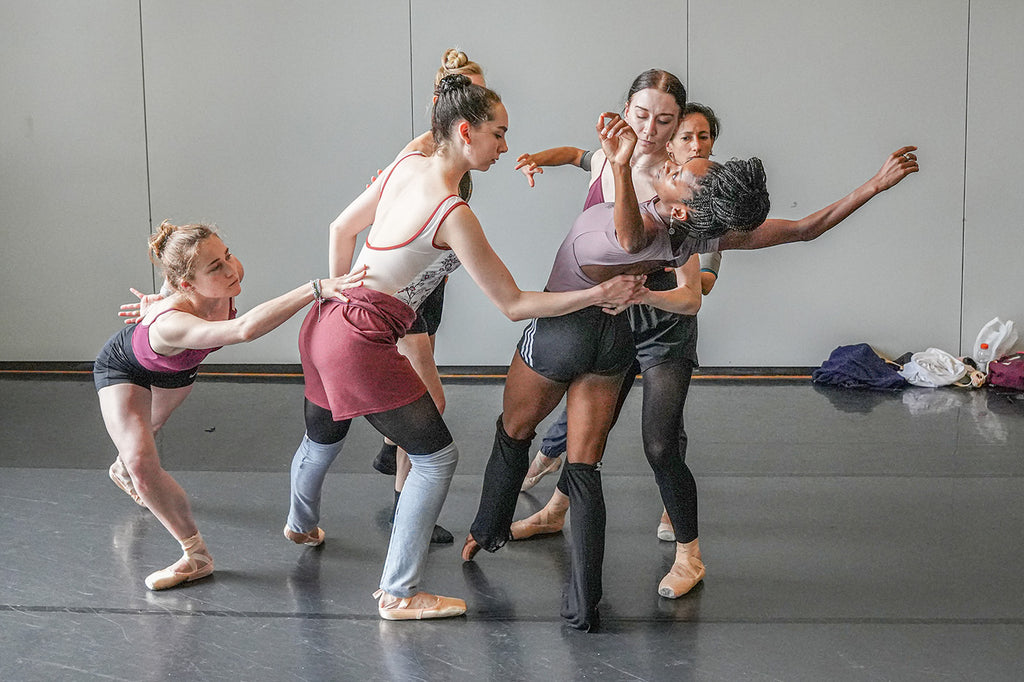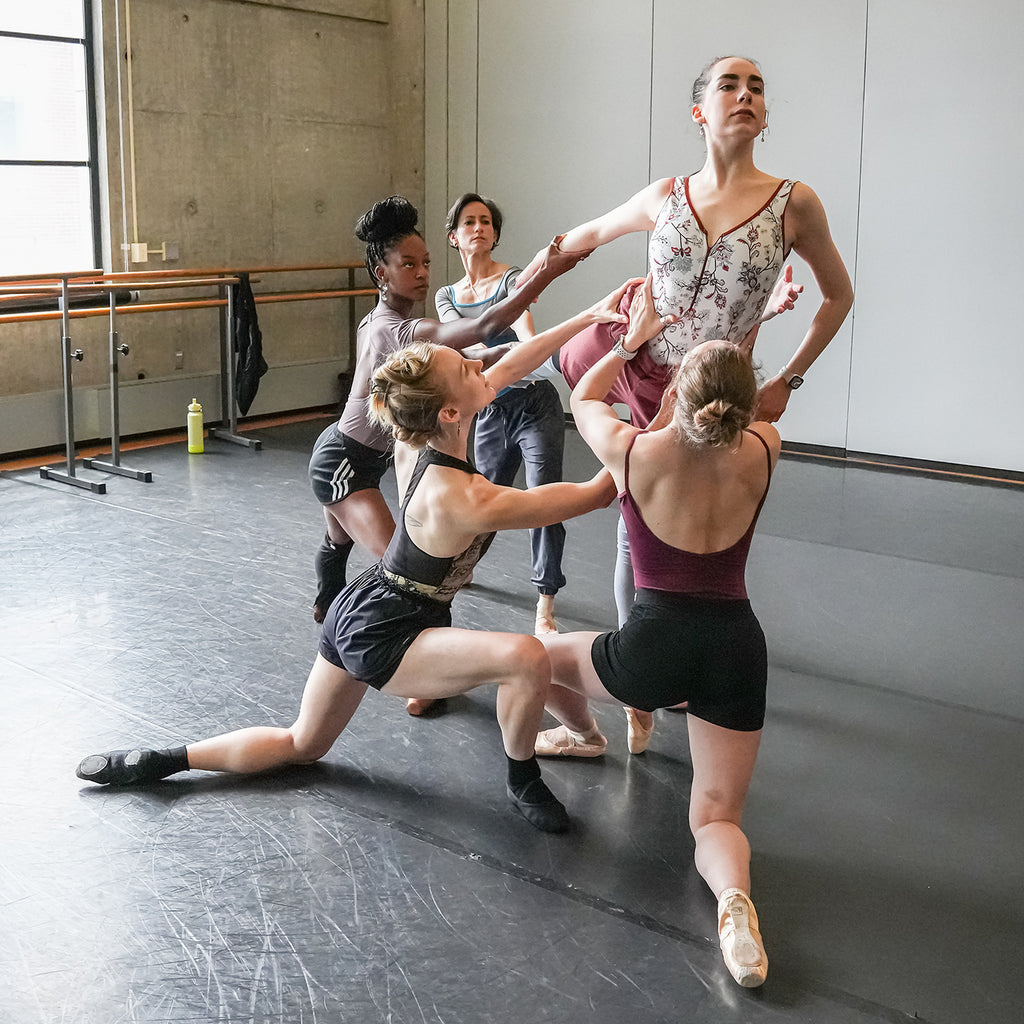How did this collection of poems from Adrienne Rich come to be the inspiration for QTB’s new production?
We were thinking and talking a lot about narrative because I really think ballet needs to be pushing itself in its storytelling right now, really challenging what type of stories we want to tell and how we want to tell them.
When you say that, do you mean in terms of relevancy for audiences?
I think that's part of it. But if we're choosing to tell stories, we need to be thinking about narrative in ways that challenge the art form itself, to expand and to grow. We need to be telling fresh stories to breathe life into the craft, and yes, I think that will bring more people in and be more relevant to today's audiences or who we would want today's audiences to be. That's the hope, right?
We were wondering if we should choose a short story or pick a writer, but then Emily DeMaioNewton, who is the dramaturg on this project, and also our inclusion and belonging coordinator, a poet and a writer, and is in grad school for art therapy—it was their idea. They said, “I think we should like choose someone like Adrienne Rich and look at a piece of her work and do that.” She suggested this book of works from the ’70s. Immediately it was like, ‘Oh, yeah, this is going to do what we want it to do.’
Do you have a favorite poem from the collection?
The second poem in the book, “Fantasia For Elvira Shatayev.” It's based on real life, on an all-women climbing team that died. It's the way we're starting our show. Not that it's necessarily going to be so literal, but it's this idea of this group of people who are not men, in a traditionally male-dominated sport. They have the highest stakes, it's life or death. The dancers set off on this journey together, and they have to rely on each other so wholly and deeply. There's something so heartbreaking but also relatable about how the thing the climbers love the most and work towards their whole lives is also the thing that hurts them the most. And I think that sometimes it can feel like that as a queer person in ballet.
What do you think will be next for QTB after these performances?
We definitely want to tour and do lecture demonstrations or community-based programming. I want to continue creating and producing new work and doing dance on film, because it's something that I love to do. But also, it's so accessible and important for young people wherever they are, if they're not safe to come out or whatever, to be able to find a video and be themselves. We've also been working towards an education branch where we can have resources available for [ballet] schools to come and ask: What can we do to be more inclusive? How can we how can we begin changing our language to create more space?
In the process of building QTB over the last few years, what have you learned? Has anything surprised you?
I was surprised at all the healing I really needed to do in order to do this work at all. On one hand, it's so beautiful and healing to give this opportunity to other great dancers. But on the other hand, for a while, it felt really awful because I realized I had to accept the fact that I will never know what that actually feels like because my [dance] career is over. I needed a second after Chelsea Factory to process the past year for Queer the Ballet and deal with my own stuff.
I've also realized how much I don't know about ballet. I know a lot about a lot of things about ballet, mostly what I've been taught or allowed to know. But there have been queer women in ballet history, and I'm still learning about that.




comments